Extensive neuronal differentiation of human neural stem cell grafts in adult rat spinal cord
- PMID: 17298165
- PMCID: PMC1796906
- DOI: 10.1371/journal.pmed.0040039
Extensive neuronal differentiation of human neural stem cell grafts in adult rat spinal cord
Abstract
Background: Effective treatments for degenerative and traumatic diseases of the nervous system are not currently available. The support or replacement of injured neurons with neural grafts, already an established approach in experimental therapeutics, has been recently invigorated with the addition of neural and embryonic stem-derived precursors as inexhaustible, self-propagating alternatives to fetal tissues. The adult spinal cord, i.e., the site of common devastating injuries and motor neuron disease, has been an especially challenging target for stem cell therapies. In most cases, neural stem cell (NSC) transplants have shown either poor differentiation or a preferential choice of glial lineages.
Methods and findings: In the present investigation, we grafted NSCs from human fetal spinal cord grown in monolayer into the lumbar cord of normal or injured adult nude rats and observed large-scale differentiation of these cells into neurons that formed axons and synapses and established extensive contacts with host motor neurons. Spinal cord microenvironment appeared to influence fate choice, with centrally located cells taking on a predominant neuronal path, and cells located under the pia membrane persisting as NSCs or presenting with astrocytic phenotypes. Slightly fewer than one-tenth of grafted neurons differentiated into oligodendrocytes. The presence of lesions increased the frequency of astrocytic phenotypes in the white matter.
Conclusions: NSC grafts can show substantial neuronal differentiation in the normal and injured adult spinal cord with good potential of integration into host neural circuits. In view of recent similar findings from other laboratories, the extent of neuronal differentiation observed here disputes the notion of a spinal cord that is constitutively unfavorable to neuronal repair. Restoration of spinal cord circuitry in traumatic and degenerative diseases may be more realistic than previously thought, although major challenges remain, especially with respect to the establishment of neuromuscular connections.
Conflict of interest statement
Figures

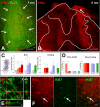
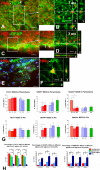
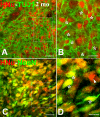
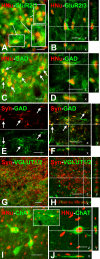
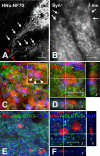

References
-
- Mallet J, Björklund A, Caskey CT, Gage FH, Hefti F, et al. Group report: Neuronal replacement and functional modification. In: Price DL, Thoenen H, Aguayo AJ, editors. Neurodegenerative disorders. Mechanisms and prospects for therapy. New York: John Wiley & Sons; 1991. pp. 271–290.
-
- Dumont AS, Dumont RJ, Oskouian RJ. Will improved understanding of the pathophysiological mechanisms involved in acute spinal cord injury improve the potential for therapeutic intervention? Curr Opin Neurol. 2002;15:713–720. - PubMed
-
- Gage FH. Mammalian neural stem cells. Science. 2000;287:1433–1438. - PubMed
-
- Lindvall O, Kokaia Z, Martinez-Serrano A. Stem cell therapy for human neurodegenerative disorders-how to make it work. Nat Med. 2004;10(Suppl):S42–S50. - PubMed
-
- Park KI, Ourednik J, Ourednik V, Taylor RM, Aboody-Guterman KS, et al. Global gene and cell replacement strategies via stem cells. Gene Ther. 2002;9:613–624. - PubMed
MeSH terms
Substances
Grants and funding
LinkOut - more resources
Full Text Sources
Other Literature Sources

